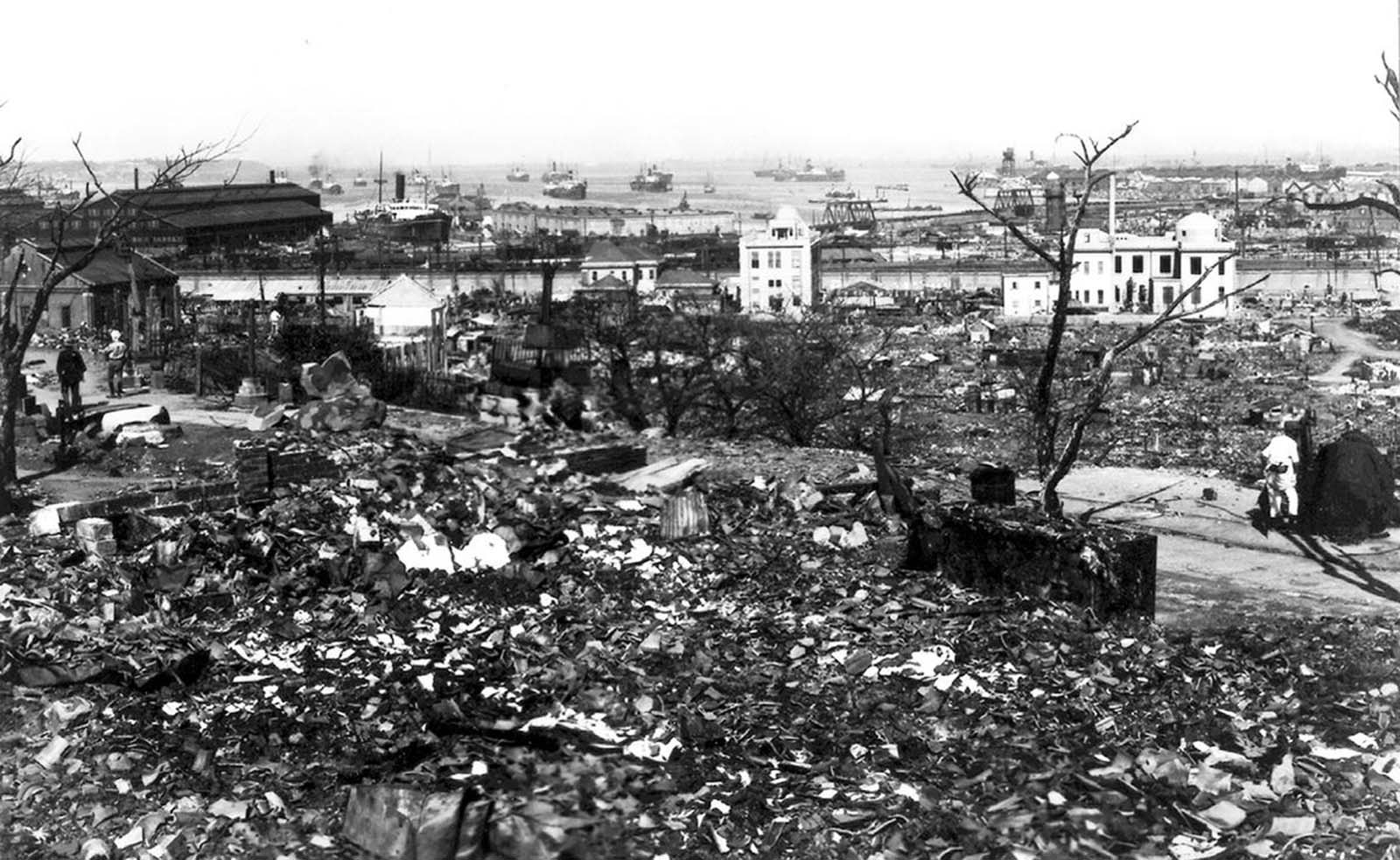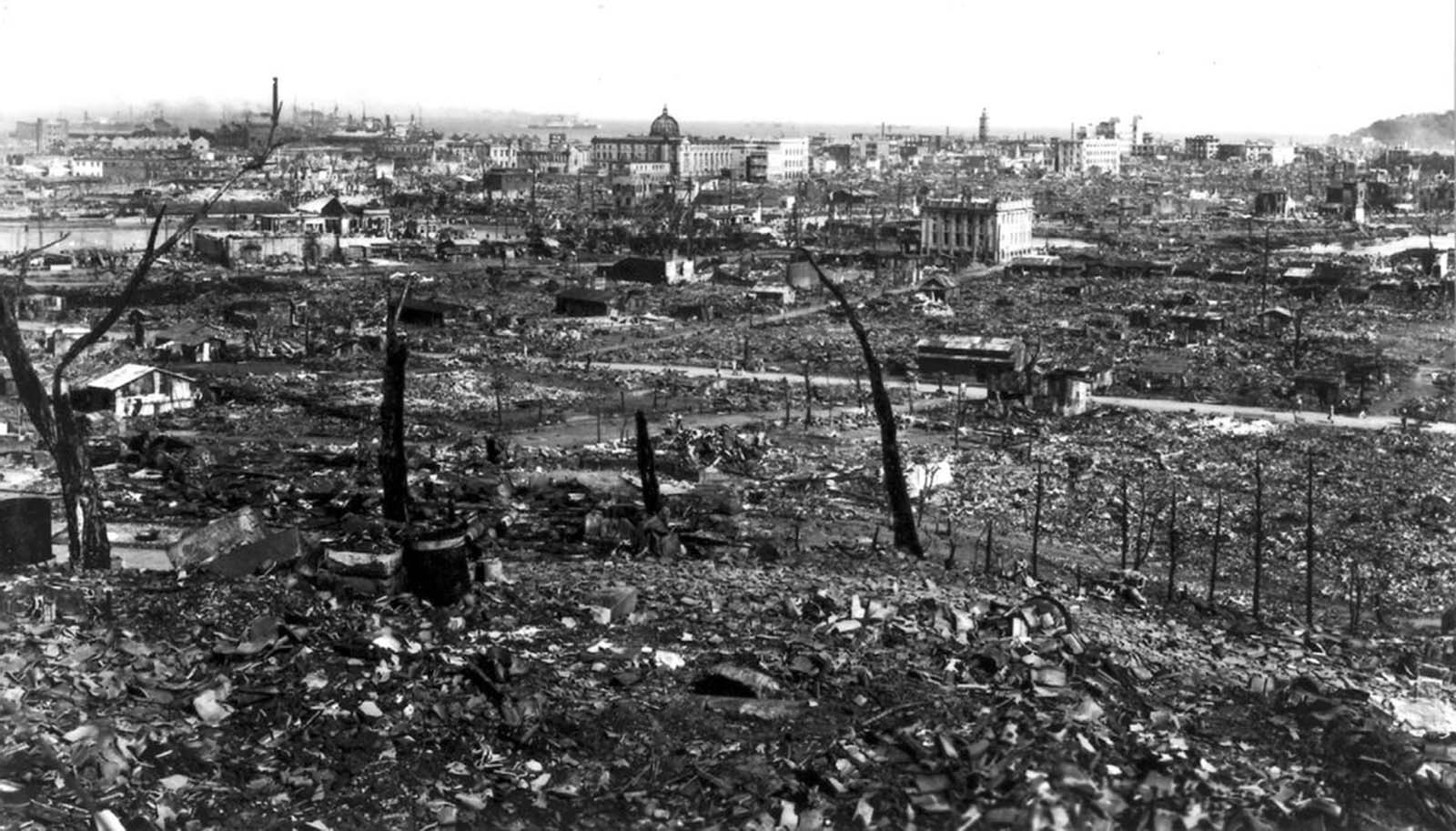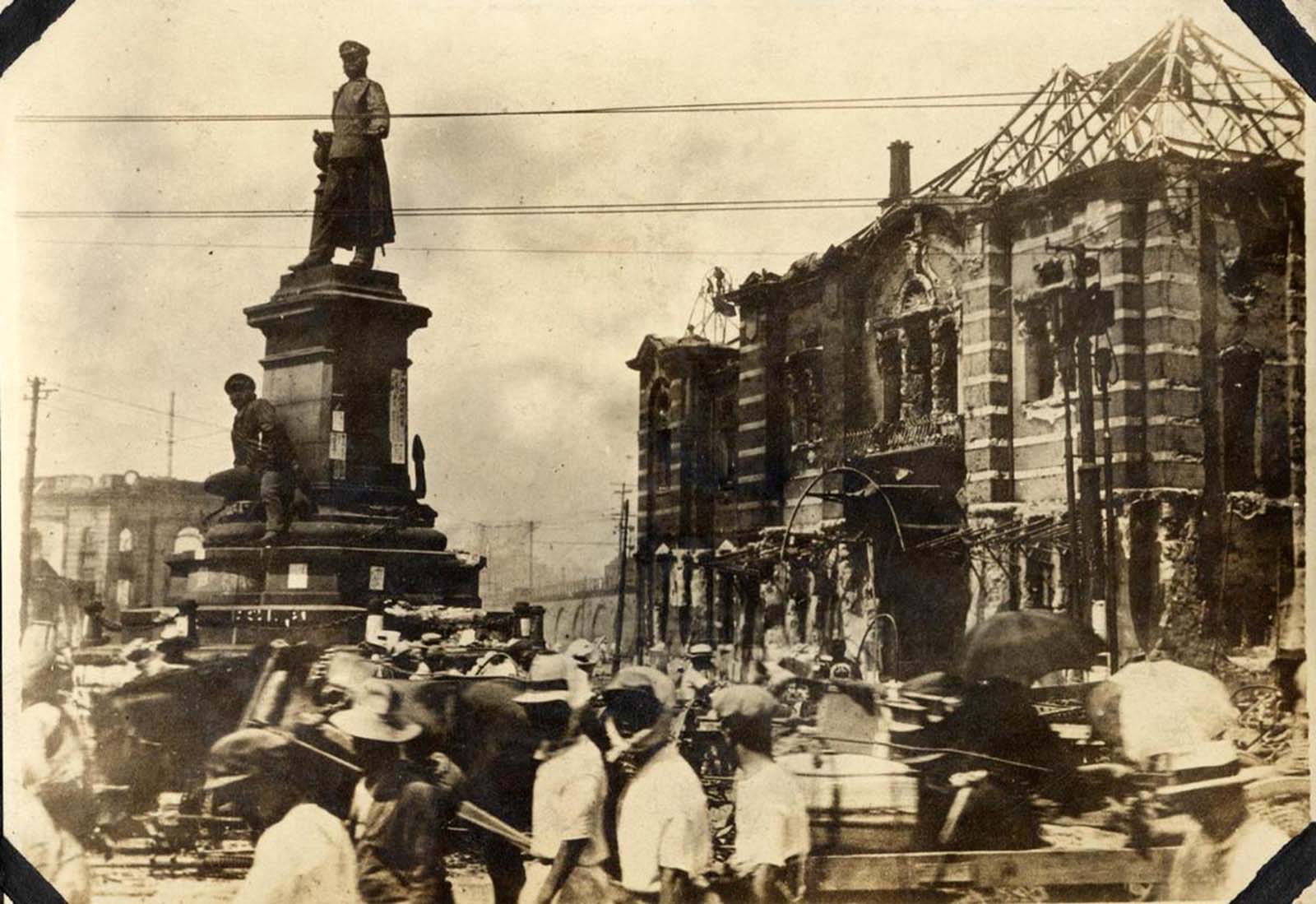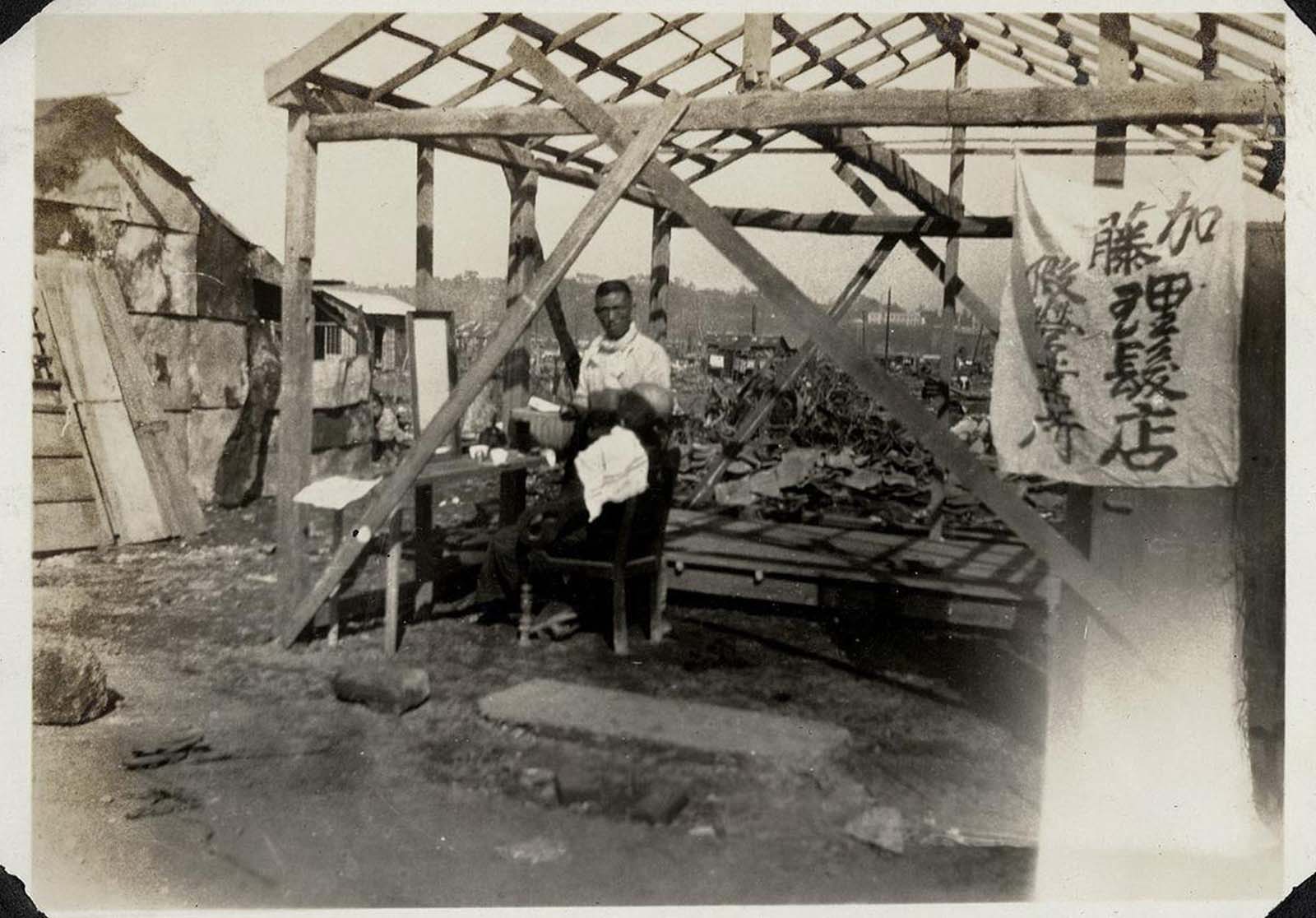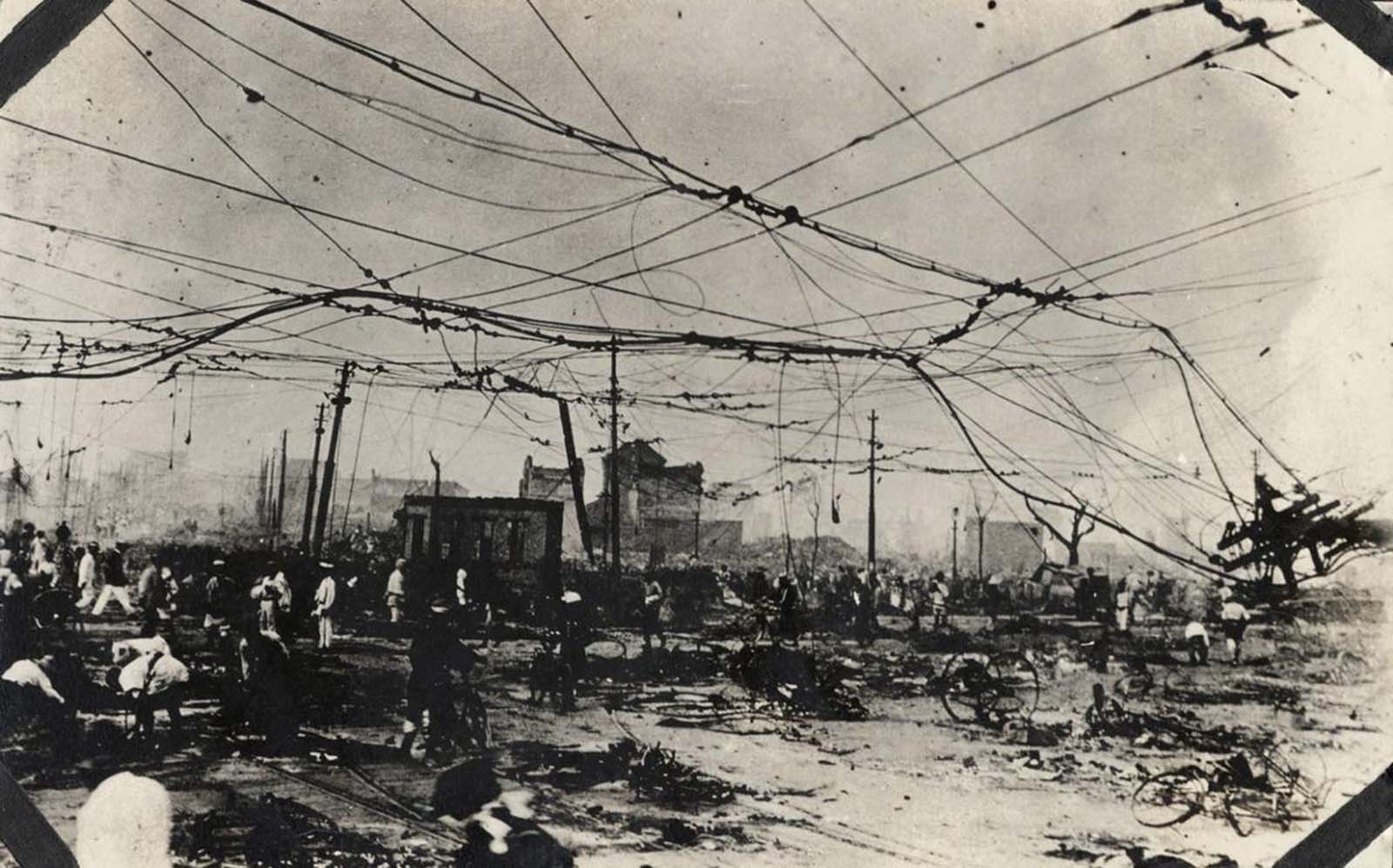The earthquake had a magnitude of 7.9 on the moment magnitude scale with its focus deep beneath Izu Ōshima Island in Sagami Bay. The cause was a rupture of part of the convergent boundary where the Philippine Sea Plate is subducting beneath the Okhotsk Plate along the line of the Sagami Trough. The total death toll from the disaster is estimated at about 142,800. The quake struck at 11:58 am, so many people were cooking lunch. In the wood-built cities of Tokyo and Yokohama, upended cooking fires and broken gas mains set off firestorms that raced through homes and offices. Fire and tremors together claimed 90 percent of the homes in Yokohama and left 60% of Tokyo’s people homeless. The Taisho Emperor and Empress Teimei were on holiday in the mountains, and so escaped the disaster. Most horrifying of the immediate results was the fate of 38,000 to 44,000 working class Tokyo residents who fled to the open ground of the Rikugun Honjo Hifukusho, once called the Army Clothing Depot. Flames surrounded them, and at about 4:00 in the afternoon, a “fire tornado” some 300 feet tall roared through the area. Only 300 of the people gathered there survived. The temblor destroyed two of Japan’s largest cities and traumatized the nation; it also whipped up nationalist and racist passions. And the quake may have emboldened right-wing forces at the very moment that the country was poised between military expansion and an embrace of Western democracy, only 18 years before Japan would enter World War II. The earthquake also exposed the darker side of humanity. Within hours of the catastrophe, rumors spread that Korean immigrants were poisoning wells and using the breakdown of authority to plot the overthrow of the Japanese government. (Japan had occupied Korea in 1905, annexed it five years later, and ruled the territory with an iron grip.) Roving bands of Japanese prowled the ruins of Yokohama and Tokyo, setting up makeshift roadblocks and massacring Koreans across the earthquake zone. According to some estimates, the death toll was as high as 6,000. These archival images, drawn from the U.S. Geological Survey, AP, and Brown University’s Dana and Vera Reynolds Collection, show the horrifying wreckage. They’re a reminder that Japan has faced brutally difficult rebuilding efforts, and succeeded in building back better. (Photo credit: U.S. Geological Survey / AP / Brown University). Notify me of new posts by email.
Δ Subscribe




